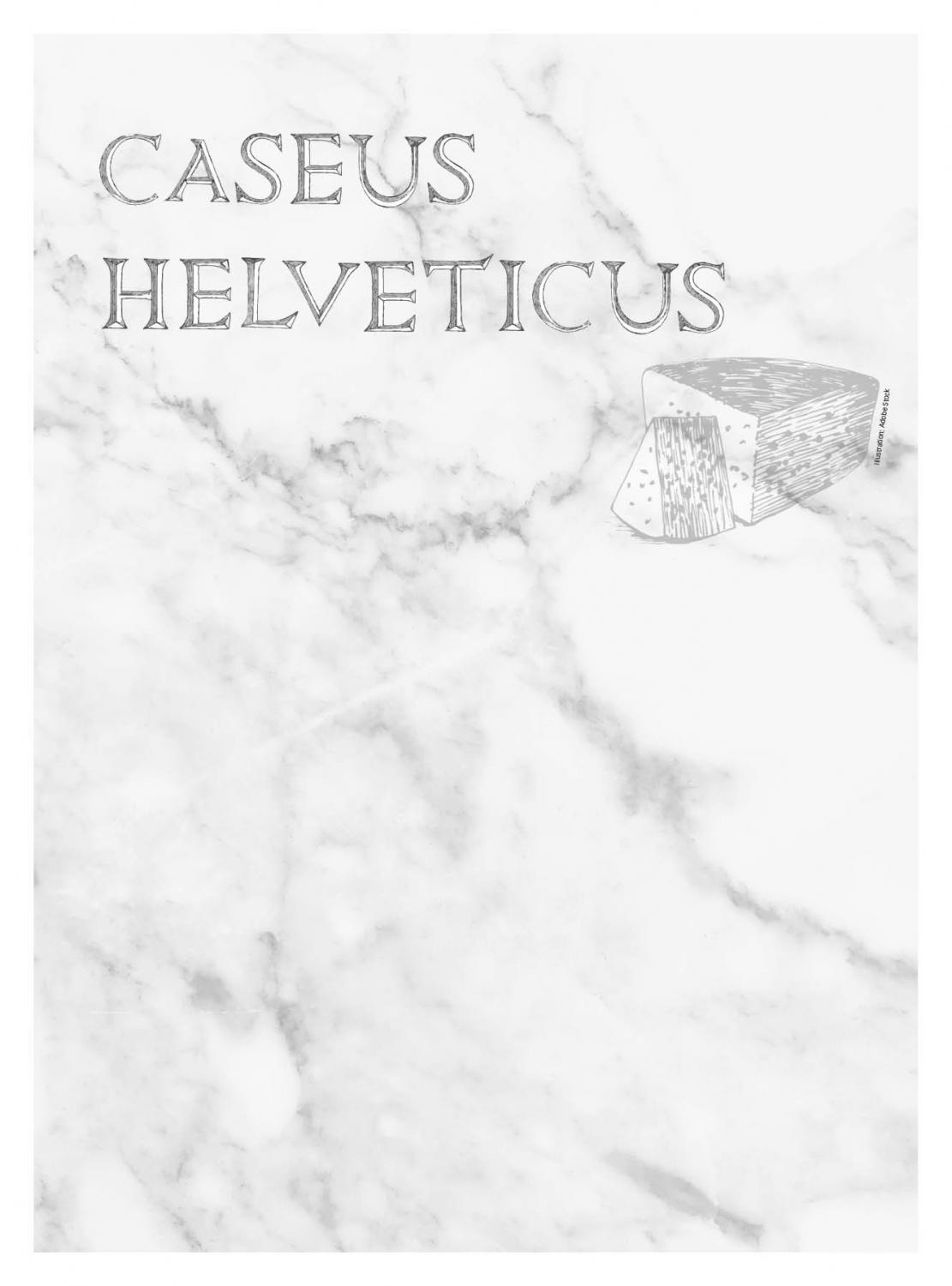Caseus helveticus
29.12.2020 Arts & CultureThough the term is attributed to Pliny the Elder on a Swiss government website and cited in numerous places on the internet, the nature of the ever obscure “cheese of the Helvetians” remains a bit of a mystery.
The Swiss EDA website has a section entitled “History of cheesemaking”, where it asks the question: “Who invented Swiss cheese?” The site explains that the Roman historian Pliny the Elder (23/24–79 AD) called Swiss cheese caseus helveticus, named after one of the tribes living in Switzerland at the time. Is that so?
In his work Naturalis Historia (11.97), Pliny describes the most popular cheeses in Rome at the time of writing (c.77–79 AD), but he never uses the term caseus helveticus. The closest he gets to the Helvetian lands is a cheese called Vatusican made by the Ceutrones tribe in what is now known as the Tarentaise Valley of France. Pliny does discuss a goat cheese made somewhere in Roman Gaul (nam galliarum, “that of Gaul”), but not in very flattering terms: he likens the taste to “medicine”, which I am sure in Roman times, as today, was not a compliment.
The phrase is also attributed to the prominent Roman agricultural writer Columella (4–c. 70 AD), and although he devoted an entire chapter to cheesemaking in his work De Re Rustica (“On Rural Affairs”), it seems he never uses the term in Latin either. He does, however, describe how to mix caseum gallicum (“Gallic cheese”) with nuts, seasonings, and peppered vinegar, which all sound delicious.
Intriguingly, The Cheese Handbook, by T.A. Layton, speculates that “the caseus helveticus mentioned by Columella was probably a Sbrinz.” This would not be the first time that caseus helveticus was attributed to a modern cheese. In the Historia Augusta (c. 360–395 AD), a collection of biographies of Roman emperors, the emperor Antoninus Pius (86-161 AD) was said to have died soon after eating freely of alpinum caseum (“Alpine cheese”). Amazingly, the English-language Wikipedia article on Antoninus confidently states that it was an “Alpine Gruyère” that did the man in – a sublimely pleasurable way to go, to be sure, if only it were true.
So, what can we make of all this? There is little doubt the Alpine denizens of Switzerland have been making cheese for a very long time. According to Paul Kindstedt’s Cheese and Culture, Alpine cattle and sheep dairying became firmly established in Switzerland in the first half of the third millennium BC (c. 3,000–2,500 BC), and organic residue analyses of contemporaneous pottery fragments “suggest that cheese making began in Switzerland…about the same time that dairying was introduced.” Kindstedt also notes the Greek geographer Strabo (64/63 BC – c.24 AD) “wrote of widespread cheese production all along the northern slopes of the Alps” by the native inhabitants.
The archaeological and literary record notwithstanding, the first mention I could find of caseus helveticus was in a Bohemian-Latin-German dictionary from 1720, written by Kašpar Zachariáš Vusín. While there may be earlier citations, the term could be a relatively recent invention, possibly a literal Latin translation of ‘Swiss cheese’. And it is not inconceivable that someone prior to 1720 used the Latin phrase – but if they did, they did not broadcast it.
Swiss mountain cheese has a justly earned reputation for excellence, and the Saanenland’s varietals were rightly lauded as “allerbesten Käss” (very best cheese) in Johannes Stumpf’s chronicle of 1548. Take some time to savor the complex and subtle flavors imbued by the wildflowers and grasses of the high Alpine meadows surrounding our beautiful valley. En Guete, but just do not call it…you know what.
ALEX BERTEA




